When a Spitfire turns into a praying mantis: Seafire F.XVII, 741st NAS, St.Merryn 1947
About the Seafire F.XVII
The Seafire F.XVII shown here represents the second generation of "Spitfires that were taught to swim", now equipped with Rolls Royce Griffon engines instead of the previous Merlin engines.
The first Seafire Mk.XV powered by Griffon engines largely corresponded to the Spitfire Mk.XII with a reinforced airframe, whereby the wing folding mechanism and the V-shaped arresting hook of the predecessor model Seafire Mk.III were adopted for carrier operation.
Growing a Spitfire's sea legs was no easy task, as experience with the predecessor models had already proven. Of course, this was not due to the always superior performance potential of the type, but to design peculiarities that were built into the Spitfire as a classic land plane from the very beginning: a relatively fragile landing gear with a small track width as well as an engine with enormous power and corresponding torque had to lead to difficulties on a narrow carrier deck!
The problems caused by the narrow landing gear can easily be imagined. Besides the resulting instability, the soft suspension tended to make taking-off and landing Seafires bounce on the deck. The fatal consequence was that on landing, the arresting cables were missed or taking-off machines became uncontrollable, both usually ending in breakage or even leading to collisions on the packed flight deck.
The brute torque from both the horsepower Merlin and Griffon engines, as well as the airflow from the propeller, exacerbated the already hairy situation. With Griffon engines, even with the rudder fully depressed, the launching Seafire often yawed so far to the left that the aircraft crashed into the superstructure.
The Seafire F.XVII represented an attempt to improve these circumstances. The landing gear legs were lengthened and the soft-riding shock absorbers were stiffened. This also helped to reduce the widespread phenomenon of 'deck pecking', i.e. the chopping of the (mostly wooden) carrier deck by the propeller batten tips when the Seafire had once again briefly gone down too hard.
Furthermore, the full-view cockpit with flattened fuselage back, which had already been tested in the last production batch of the Mk.XV, now became standard. A highly visible change was also the introduction of a new windscreen: a rounded, continuous shape replaced the three-piece design with flattened windscreen previously used on the Spitfire.
The F.XVII also returned to the principle of the "spiked" tail hook. When extended, it reached beyond the end of the rudder and was intended to increase the chance of a successful hooking into the arresting cable compared to the old V-shaped arresting hook, which was mounted far forward of the tail on the underside of the fuselage.
The suspension points for the external loads were also reinforced: it had become clear that in view of the emerging jet age, even for a Spitfire/Seafire, its days as a fighter would be numbered. A hunch that was to be confirmed with the countless fighter-bomber missions of the Seafire in the Korean War.
A total of 232 Seafire F.XVIIs were produced. The aircraft were mainly built by Westland (212 units) and Owen-Cunliffe (20 units). The performance of the Seafire F.XVII was to keep it in service for some time after the end of the war: Powered by a Griffon VI with 1850 hp and a maximum take-off weight of 3628 kg, it reached a top speed of 620 Km/h. The fixed armament consisted of two 20mm Hispano machine guns.
The Seafire Mk.XVII was flown by FAA operational squadrons until the mid-1950s before being withdrawn entirely to reserve and training units. This example, Seafire Mk.XVII, SX273/S-50, is a good example. Dressed in the colours of the Temperate Sea Scheme, it served with the 741st Naval Air Squadron stationed in northern Cornwall in 1947 as part of an Operational Flying Training Unit of the Air Warfare School St. Merryn. By the way, Airfix made a small mistake here: in the documents the aircraft is assigned to the 714st NAS, but such a unit does not exist, Airfix´ 714st NAS may have been created due to a simple number error.
About the kit and building process
The markings of the Seafire presented here come from the new and quite pleasing kit from Airfix. The only thing I could criticise about this kit is that the panel lines are far too deep, which is typical for the manufacturer - but as practice has shown, this can be dealt with quite well.
It is pleasant to see how much Airfix tries with the building instructions to guide the modeller comfortably through the many building variations that this kit has to offer. All control surfaces are hinged, the aircraft can be shown parked, with folded wings, in flight with or without extended arrestor hooks and simply parked. Accordingly, all parts for flattened as well as for full-round tyres are included.
From the very beginning I liked exactly this aircraft in the condition shown here; the look of the characteristic double folded wings combined with the racy lines of a classic fighter simply appealed to me! The Eduard etched parts for the folding mechanisms are quite good. This is especially true for the wing tips: Airfix has simply provided smooth surfaces - which is definitely not satisfying.
The depiction of the exhaust pipes is also a bit easy - because "pipe" as a designation presupposes at least a cavity, even if only an implied one! Not so here: the two parts for the exhaust system are solid castings. So you can't avoid drilling out the exhaust ends. This is, however, quite an easy exercise.
The decals are all from the kit. They have two essential qualities that please the model builder - and which one is already used to from Airfix: excellent workability as well as an almost overflowing number of maintenance instructions!
So if you are looking for an uncomplicated and quickly realisable, but not boring possibility to build one of the most beautiful aircraft ever launched from a carrier deck, Airfix's new offer is the best choice. In any case, I was thrilled with the experience around this Supermarine Seafire F.XVII without any compromises!
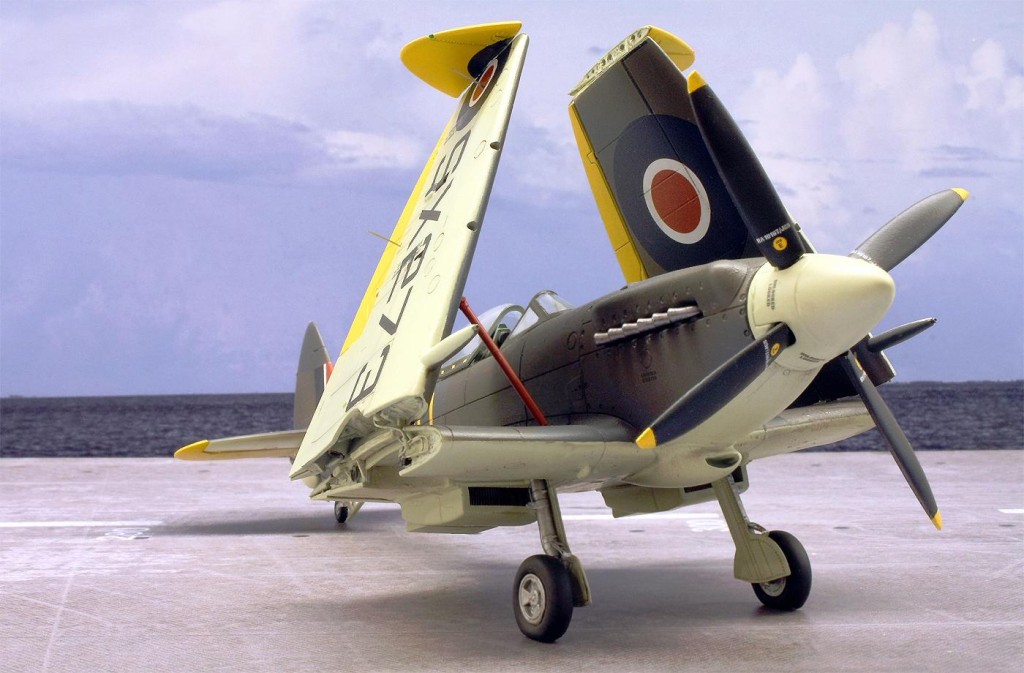
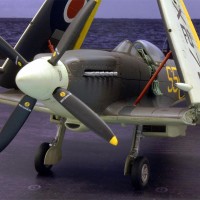
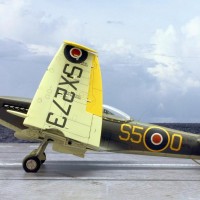
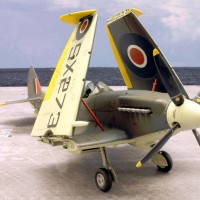
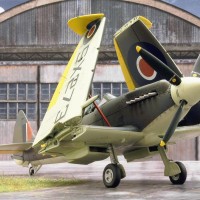
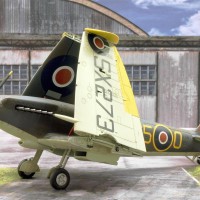
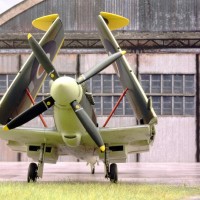
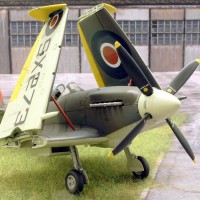
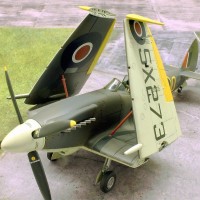

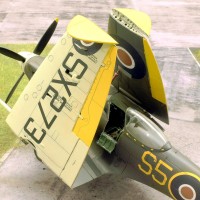
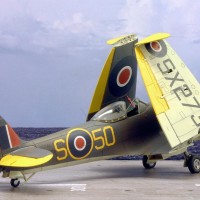
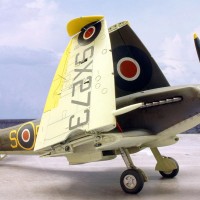
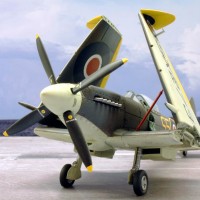
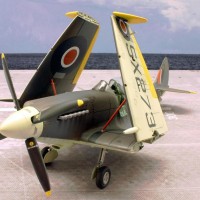
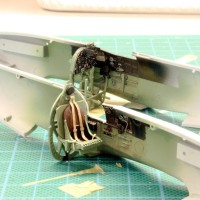
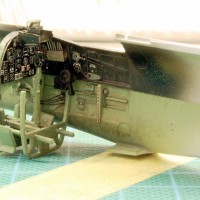
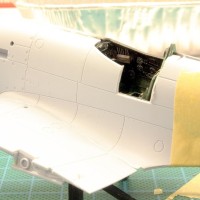
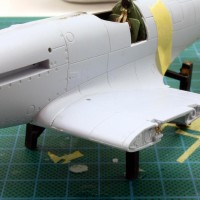

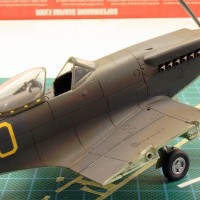
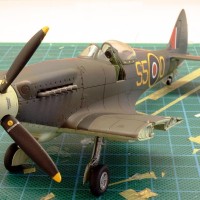
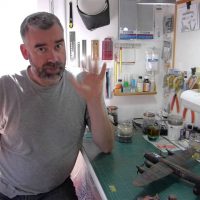
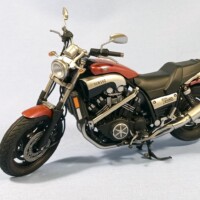
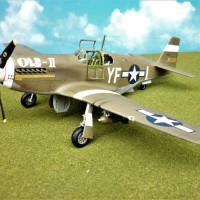

This is exceptional work. Really well built and finished. I just finished a Airfix Spitfire myself and agree with your assessment of the kit. Thanks for sharing! I think I might have to get myself a Seafire after seeing this post!
Your words make me happy, thank you!
Fantastic job as always, my friend Roland!
Equally amazing supporting article with all facts regarding the type's evolution.
Thank you my friend! Motivating that model and words meet your approval!
Beautiful. One in the stash and after seeing yours, mine is now closer on the to-do pile
Very well! Thank you George!
Both, article and build, are excellent, Roland @rosachsenhofer
You don't see too often yellow painted parts on Seafires/Spitfires, is there any reason behind it, like recognizability.
Thank you John! Yes, this yellow not only looks good on the Seafire, but also brings a good change to the familiar colour schemes. I suspect the reason is that the 741st NAS was an FAA training unit.
Wow I didn't know they brought this kit out I will be looking for one, you did a great job on this Roland, well done.
Thank you for this motivation! I can really only recommend the kit.
Gorgeous model!
Thank you Greg!
As per your usual, this is another outstanding build from you Roland. Very informative article as well.I think I gotta get this kit because of your posting.
Thank you, well, I'm glad to hear that!
Another outstanding project with a great result.
I hope Airfix is going to follow up their recent re-release of the Spitfire XII with a re-release of this kit.
Indeed! Thank you Tom!
Nice work! I enjoyed that one too!
Thank you John!
Very nice, and a great explanation too.
Thank you for your motivating words!
Hi Roland, I’m trying hard to ignore military models, but I couldn’t resist this beautiful Seafire, I just love these naval colour schemes.
I am all the more pleased with your words! Thank you George!
Dear Roland, in brief, it is a master piece and especially the wing folding mechanism is most impressive as is the overall appearance in this wings up state. KR G.M.